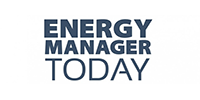 The University of Hawaii-Manoa Cancer Center and John A. Burns School of Medicine, adjacent facilities in Honolulu, have joined with Hawaiian Electric on a demand-response demonstration project that uses battery energy storage to deliver power during periods of peak energy use, according to a March 21 report by Pacific Business News.
The University of Hawaii-Manoa Cancer Center and John A. Burns School of Medicine, adjacent facilities in Honolulu, have joined with Hawaiian Electric on a demand-response demonstration project that uses battery energy storage to deliver power during periods of peak energy use, according to a March 21 report by Pacific Business News.
The two UH divisions are trying to save money manage electricity more efficiently by reducing or avoiding demand peaks. If the trial is successful, the knowledge gained from it also will help HECO to manage the grid more effectively.
Peter Rosegg, a HECO spokesperson, told PBN , “As with any ‘pilot,’ the plan is determined by how the project works. It is still being reviewed by engineers, so total cost and schedule are yet to be determined.” However, the project is anticipated to be completed about six months from the time of system installation.
Costs will be shared between the commercial energy storage vendor, Green Charge and Hawaiian Electric.”
, told PBN that project is scheduled to be completed six months from the time of installation.
“There is no cost to the university,” Miles Topping, director of Energy Management for UH, told the local business news outlet.
Demand response programs, which include offering lower and higher prices during certain times of the day through time-of-use rates, have become a high priority for Hawaiian Electric. Indeed, the utility plans to fully implement its demand-response programs, which include offering lower or higher prices during certain times of the day through time-of-use rates, by year-end 2017, it told PBN last October.
Traditionally, when demand for power fluctuates throughout the day, utilities have met that demand with generating units by adjusting the output or supply of power.
As variable renewable resources such as wind and solar increase, this technique has become more challenging to apply. The utility told PBN that, by offering lower or higher prices during certain times of the day, some demand-response programs could encourage customers to shift energy use to times when solar and wind produces the most power, which could optimize renewable sources that otherwise might be wasted.

Recent Comments